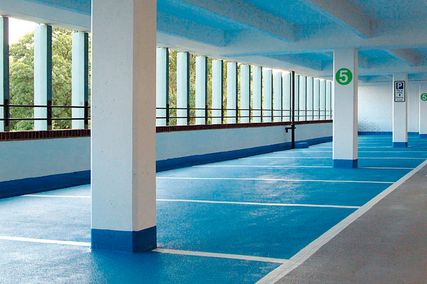The AA Roundtable seeks to generate robust public discussion, and to explore the potential of conversation, dialogue and anecdote to generating architectural knowledge. AA Roundtable 01, hosted by the University of Melbourne School of Design, addressed the cyclical nature of architecture and how we might draw on past experiences as we negotiate the current uncertain times. What knowledge is held in the profession and how might we access it?
Panellists at AA Roundtable 01 were: Geoff Warn (Donaldson + Warn and Curtin University of Technology); Hamish Lyon (NHArchitecture); Elizabeth Watson-Brown (Elizabeth Watson-Brown Architects); Nigel Bertram (NMBW Architecture Studio and RMIT University), facilitated by Justine Clark (then editor, Architecture Australia).
To set the scene each panellist gave a brief account of their careers, outlining the opportunities that came with changing economic fortunes, strategies developed and how these shifts changed their understanding of architecture. We then moved to a wider discussion of how such experience might be useful now. There is a great deal of knowldge embedded in the profession and the AA Roundtable is partly about retrieving and developing such knowledge.

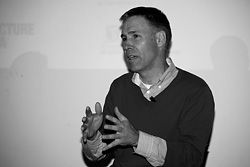
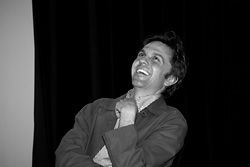
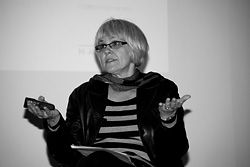
Panellists at AA Roundtable 01. From top to bottom: Geoff Warn, Hamish Lyon, Nigel Bertram and Elizabeth Watson-Brown.
JUSTINE CLARK I want to begin with an anecdote of my own. When people ask how I became editor of Architecture Australia, I tend to begin my answer with “Well, I graduated into a recession, there was no work so I had to find something else to do.” Of course it was a long time before I ended up at Architecture Australia, but the economic climate of the early nineties shaped a rather meandering career path, and perhaps a rather disjointed attitude to what a career might be. I suspect that if I had graduated into a more vibrant economy things might have worked out differently, although not necessarily better. Indeed my generation is the last to have experienced an economic downturn prior to this one and we’re also the last to not have graduated with the burden of a HECS debt. And while the lack of jobs on graduating was disappointing for us it didn’t come as a big surprise.
I’d begun my degree in the boom of the 80s but on the very first day of architecture school was told, in no uncertain terms, that it would not last, that architecture was cyclical and that it was a fascinating field but not a reliable source of steady or increasing income. If we wanted that we had better change degrees. On graduating most of us found interesting bits and pieces to do on the edges of the discipline while still managing to pay the rent and over time some did eventually make it into conventional architectural practice while others made varied careers in related fields. This was my formative experience of architecture, so I sometimes found the frenetic prosperity of recent years a little unreal and the expectation that it would simply keep going rather worrying. In hindsight I wonder if this time we forgot to point out the downs to those entering the profession.
GEOFF WARN I was born in Western Australia. I studied through the second half of the 70s, which was a downturn in the west, and graduated into a recession, and I ended up leaving to study overseas. I started my practice in 1985 with Dick Donaldson. Prior to that I worked as a sole practitioner, primarily doing small interior projects. There was no work around, and those were small-scale projects one could get as a young practitioner.
You can pretty much mark the growth of Perth in ten-year cycles of booms and busts – we get one and a half towers up. The half is the one that gets built and is vacant for five years or so, and many businesses have taken the opportunity for free rent that has been offered by the developers and then the cycle starts all over again. It’s an intermittently expanding city.
In a recession in WA, we go to the pool or the beach and just sit around and wait for it to pass. Over my career, looking to the east and major cities from the west, it feels like, from the creative discipline’s point of view, Perth has always been in a recession with some moments of hope. But this one seems to be somewhat different. There is definitely a bit of a momentum towards trying to change the city, but Perth is not traditionally a design culture, it’s very much a suburban culture and one of having a rest and taking it easy, waiting for the world to pass by and enjoying yourself.
One of our survival tactics is to be able to work across different scales. We put a lot of work into incredibly modest projects and create a good rapport with clients, which often results in further projects.
And the next recession, back to the pool and everyone’s happy, wondering what to do next, and that’s the full circle.
HAMISH LYON I studied here at the University of Melbourne, in the days when you were encouraged to take a year off to do practical work in the middle of your degree. So in 1983 we all went into the world as ambitious third years – but, of course, it was completely empty of work. Then we graduated in 1986/87 into a really big recession. We found ourselves in a repeating cycle and we were starting to think we should have put accountancy on our university forms. Later, I ended up working with the government architect and in the late 1990s, in the last days of the Jeff Kennett government, I found myself being sold as a commodity. I didn’t think things could get much worse. Now I’m a partner of NHArchitecture, and with the current global recession, we are dealing with the difficult issues of employment. We sit around the partners’ table in very complex conversations and have to deal with the harrowing questions of people’s lives.
So that’s one story, the negative one. But there are multiple narratives occurring at the same time.
In fact, in 1983 when I took my year out and couldn’t find work, I scraped together some money and set off on what turned out to be a long travelling experience. I travelled widely, and was lucky enough to get a job with Robert Venturi in Philadelphia, so I found myself in one of the most significant architectural practices in the world at the time.
Then, graduating in the late 1980s, we all ended up doing a bit of everything. We worked a few jobs, we tutored at the universities, we did renderings, we made models, we did many different things. My senior mentors at that time were also working and teaching, and developed a positive attitude about being a practitioner and an academic and doing lots of things.
The positive aspect of the 1990s recession was that I found myself on a very large project, the Crown Casino complex. Most of my colleagues said “That’s a crap job, why do you want to work on a casino for?” But four years of solid employment looked pretty good to me. It also was an opportunity to work on a major project, and taught me the ground rules as to how to work on major public infrastructure projects, which proved to be an incredibly important experience. I learnt how to work on a project from the beginning to the end and not just dance around on lots of projects. Working with government taught me about dealing with different authorities. It taught me that the architect wasn’t the sole creator of a project. It taught me that architecture is made by a lot of people and a lot of decisions. And it’s brought me to where I am now.
ELIZABETH WATSON-BROWN I’m going to talk a little bit about the past to argue that the so-called “recession” is a correction we need to have. We need it to clear the air after this unsustainable boom. As one from Queensland, I think I can give a bit of a lecture about misery, poverty, trials and tribulations because Queensland has a very long history of disasters, recession, misery, derision from elsewhere. We’re good at frugality up there, and I think that’s what we need right now.
I started studying architecture at the University of Queensland in 1974, the year of the flood. It was pretty much submerged and that’s pretty telling. My education proceeded during the era of political disaster in Queensland. Joh Bjelke-Peterson was in power. In 1971 a state of emergency had been declared in preparation for the Springbok tour, so we were actually living in a police state. Paradoxically, 1974 was also the first year of no fees for students. This shaped our whole attitude to life. Our whole architectural education was in parallel with the dawn of quite a lot of political activism in Queensland – student and black and women’s activism – and with us this was also associated with architectural activism.
As I said, no fees at university had an enormous social impact and we can thank Gough Whitlam for that. It opened up architectural education to lots of different people, not just private school kids. There were enormous social ructions, we had a lot to fight against and a lot that helped us develop our particular attitude to the world and to architecture.
So, now I think we need to take a breather and have a really good hard look at ourselves. Why not try some good old Queensland-style frugality? Let’s be lean and hungry, let’s work within our means, let’s be strategic and sensible and sensitive and smart, let’s get back to reality, let’s right-size everything, let’s minimize cumbersome, oversized organizations and processes, let’s wean ourselves of the profligacy and indulgence, the gratuitous, the over-iced.
NIGEL BERTRAM I feel like my experience has been almost always in recession. I graduated in 1991 and there wasn’t a lot of work around. I somehow received something that wasn’t quite a job, more like an apprenticeship, at the office of Edmond and Corrigan – working for a very modest wage, doing a lot of menial tasks. That was a very important experience because that office ran like a lean machine. It was also that period when our teachers and peers were also always doing other things. It was expected that you would do a bit of everything as an architect – some teaching, a bit of writing, maybe an exhibition or something provocative, or a theatre production – and make buildings at the same time.
A lot of important knowledge in Melbourne’s architecture culture developed at that time; a lot of practitioners took time out to do masters degrees, enter competitions and be involved with the discourse, which in a boom you don’t always have time to do. There’s some kind of relationship between a recession, thinking and cultural development.
Always juggling a couple of things is one way of moving with the ebb and flow of the economy, and other opportunities come along. Our practice has been developed with this in mind. We’ve got three directors and almost no staff, not an ideal way of setting up a business. It was always assumed that we would want to have time to do other things as well – whether achieving a life/work balance, having children, being able to teach or being able to do an exhibition overseas or take up a particular project – that has been very important for us. It’s a practice built not on the idea of growth but on endurance, like a long-distance runner.
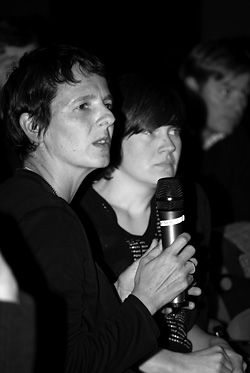


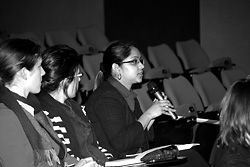
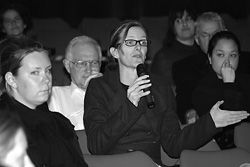
Questions and comments from the audience, including Hélène Frichot (top) and Tracey Avery (bottom).
JC There’s a challenging tension between the ethical obligations in employing people – the serious and difficult side of the downturn – and the sense of opportunity, the stretching of ideas of what it might be to engage with architecture.
HL What comes out of all our anecdotes is that “recession” and “growth” refer to complex stories, and that cycles are not necessarily concurrent. Some of our richest experiences are counter cyclical precisely because we weren’t employed. The other point is that a boom can be a bad thing in disguise – not being able to build what you want when you want can liberate you.
GW I want to mention one of the things that has been different about this particular boom. WA, like Queensland, developed around a gold rush mentality from first settlement, and there’s been any number of mineral rushes since. One of the negative effects is that the state has been built on a very shallow, almost singular economic base. Usually, when those booms receded the community was small enough to be self-sufficient, to pull back and survive locally. This time it’s been much more difficult because available finance is the main problem. And the shock was that it happened overnight. In the past, the recessions had been slow and people receded back slowly to a utilitarian existence. This time what was given was taken away so quickly, and by that time the costs were phenomenal.
EWB How have you dealt with that day-to-day in your practice?
GW We have a tradition where we had a couple of directors and a couple of senior people and a lot of young people working for us. That was the atmosphere practices were built around in those days – it was all done on cheap labour and we had very low salaries and cheap rent. Then suddenly that wasn’t available – graduates were asking salaries at director or senior practitioner levels; rent went through the roof; servicing a business went through the roof. When a recession comes, it’s very hard to go down again because those costs get fixed. So we’ve tried to consolidate, we didn’t lose anyone, although one person who wished to leave did. We’ve tried to increase our productivity by doing lots and lots of small jobs, not particularly glorious jobs, and tightening as much as we could on business costs, but they’re fairly linear and there’s not a lot of excess in a practice like ours. We don’t have fancy offices.
JC And how have you managed, Elizabeth?
EWB Pretty similar to Geoff. We’re a small practice, twelve people, and I’ve just been hanging on to those good people. You don’t want to let go of that kind of long history and devotion and experience. So we’ve been trying to streamline in other ways and we’re measuring productivity in a much better, more thorough way. I am also devolving responsibility to others, so everyone has some kind of ownership of the process. Fees and productivity are quite transparent, and I hope more democratic and flat, in terms of the organization. In that way we’ve got more productivity out of people because they’re building their own future.
HL What’s interesting, from our point of view, is that it’s not a negative thing but a complex problem. During the good times we also restructured – for example, lots of people working with us come from various parts of South-East Asia and they didn’t want to have the two-week compulsory Christmas shutdown, they wanted to go back for Chinese New Year or other things. So we started to listen and restructure to allow everybody more flexibility … and other people were saying, “Look, I can work from home on the computer, I can work three days a week, I’d like to come in late”. That culture still exists but when the tightening occurs and you’re about to sail into a storm, everyone has to return to point and say, “Well, my job is to look after the sail and your job is to do this”.
NB During the boom we started working in country Victoria. They weren’t experiencing a boom and couldn’t get consultants. They had all sorts of difficulties and ended up inventing quite different ways of procuring projects, of delivering an outcome for the community. Our experience in the Wimmera was really enlightening, precisely because they couldn’t procure a consultant or a project in a normal way. This fantastic new process evolved where everyone got quite a lot out of it and that invention wouldn’t have happened if they had received an EOI from their ad in their paper, which they didn’t. They might get some now, a few more are a bit more hungry.
Audience I wonder if we should be thinking about the role of the Institute in lobbying for us as a profession, especially with some mistakes being made as a result of the stimulus package – perhaps we are not foremost in the public eye as a way of saving money or saving society.
Associated with that, the biggest change that will happen in the next few years is housing the baby boomers. What are we doing about that? Why aren’t we thinking about that in the recession?
HL It’s a major issue and it represents the boom/bust problem. There have been such good times for so long, and there hasn’t been the apprenticeship work on the public projects, the schools and so forth. There hasn’t been the funding, so no-one’s been learning the craft of designing a school. Suddenly there’s hundreds of them and there isn’t the in-built intellectual knowledge or the rigour to produce them.
My generation was taught through Peter Corrigan’s churches, Greg Burgess’s community centres, Ashton Raggatt McDougall’s medical centres and the school program for the Public Works Department. We were trained to admire and work hard on those projects, but that knowledge has been lost for a long time.
Architects aren’t blameless in this, we’ve drifted off to do glorious beach houses and wonderful vineyard retreats, architecture has drifted off into the land of excess, and suddenly it’s stopped and everyone goes “Oh my God, I’ve got to design a school. I’ve got to do a communal health centre”. We’re currently involved in some of the work up at Marysville after the bushfire and it’s amazing to see how it takes a catastrophe to refocus people. The community, state authorities, architects – everybody’s working together, it’s a fantastic experience – but it did require not just an economic recession but a major human tragedy to reawaken people.
EWB Yes, it goes right to the core of what an architect is. We’ve lost focus, and the public perception of what we do is about glamour and crazy schemes. But, in fact, what well-trained architects do is rigorously understand a brief on a project, understand the inhabitants, distil the information, organize stuff, put it together in sophisticated ways and make structures for inhabitation and use.
One of the issues with the boom is that the focus was taken away from those incredible skills of synthesis and distillation and rigor. Now we have the opportunity to refocus, and for the public to understand that we’re not just a bunch of indulgent wankers, but we actually can make a difference and do real things and make the world work.
NB Another thing the architect can do is to say when something shouldn’t be done, or do less than what is asked. The classic example is tarting up perfectly good office facades for some sort of perceived market value. A good architect could construct an argument or build a relationship where you can say “You could not do that work and maybe invest it somewhere else”. I think architects don’t do that enough.
Audience Recently, when a lot of people were losing their jobs, I was helping a small heritage firm find a heritage architect, but no-one could do it, no-one would do it, they’re still looking. I don’t know exactly why. On the one hand it’s not sexy to work on existing buildings. But realistically, a recession is the time to link existing building and sustainability together and some exciting architecture can emerge from that. But as you’ve been saying, there’s a loss of skills and perhaps students don’t know how to deal with a building even built in the 60s.
NB I think students are actually really interested in those things. When they have the chance to propose their own projects, the current generation of students really wants to engage in a bottom-up approach, in adaptive reuse and modifying structures.
Audience I wonder about our ability, as a profession, to invite the utopian. How much did we contribute to this bubble of excessive enthusiasm? And if the idea of a critical architecture or critical architectural practice got lost in the last five years, maybe part of the reflection time we have now could be used to rediscover those critical tools and apply them when the next boom comes. We’ve got the ability to crank out amazing renders and maybe that hastens things because these utopias seem so achievable.
HL I think a broad intellectual discussion is going to unfold over the next ten years about utopia, reality and hyper reality. Did we contribute to it? Architects are just now part of a big puzzle and the issue of architecture and speed wasn’t very well handled – no-one was critical of it, no-one discussed it, no-one intersected with it, it was like time sped up and everyone sped up relative to it.
Audience I’m specifically interested in the question in front of us, of embodied knowledge. How are we to transfer this knowledge, given that we all recognize this ebbing and flowing? What happens when we arrive at a bust after a boom and we’ve simply lost the critical capacity to move on? We waste a lot of time scrambling about trying to find a response when, in fact, we should already be equipped. The time that we waste in the midst of a boom could be spent trying to make sure that reflections are always built into the cycles of production.
HL I’d like to add to that. I have a deep concern for architecture at the moment. Relearning the apprenticeship of humility, patience and rigour is critical, and it’s critical to producing work at the small scale, but my concern is with the current policies of state and federal money being put into major public infrastructure – hospitals that last for fifty or seventy years, major growth corridors. There’s money being pumped into education and these are long-range buildings that will affect a lot of people’s lives, like my children and my children’s children. And for architects, there’s a moment of “Holy shit, we haven’t done this for awhile”. We are going to build things in the next few years that we’ll live with for our lifetimes.
NB It’s easy to say but hard to do, but architects need to say “no” a bit more and push back against project managers and the things driving these timelines. It’s very easy to say outside of an economic cycle. But people can learn to wait and they will. That’s what I believe.
Audience Sustainability seems to have taken a back seat in this. In the last few years it was up front in the debate, developers were doing it – possibly more as a branding or marketing strategy, but it was being done to some extent. Now developers are saying “I can’t afford that right now”. But what can the industry do to push the government to fund architects or urban designers to actually do studies and get ready for the $200 to $300 oil barrel? This recession is different because we are also grappling with climate change. Is it about just fast-tracking projects or is it about slowing down certain things and reflecting about sustainability a bit more deeply?
NB I think recessions are good for the environment. It seems more natural to build sustainably and think about how to maintain a community or an environment or social and economical sustainability in a time of recession than in a time of boom.
HL My take on it is that the idea of sustainability has collapsed because the word has become meaningless. Architects are struggling to refine that position ideologically and therefore “sustainability” just ends up as a thing stuck on the front of a report that means nothing. I think we’ve got some re-centring of our profession to do before we even get to that discussion.
Audience What about the social? What is the role of the architect in providing housing as a basic need, not something of the elite?
JC I’ve had the sense for some years, predating the downturn, that there’s a growing interest within the profession in general housing, even if many architects don’t quite know how to get involved. The work that Shane Murray’s been doing is really important in this regard.
EWB We’ve recently been asked to do masterplanning and develop typologies based on standard low-cost housing for tract developments in Far North Queensland. This is affordable housing, mass housing, based on existing technologies and production processes. We’re not reinventing the wheel – existing organizations can roll the houses out, using their economies of scale and materials, but the houses are well planned.
Now, that certainly wouldn’t have happened in the last recession. These projects aren’t about doing something fabulous, getting awards and being published. They will be pretty ordinary looking, painted concrete block houses, but they’re going to face the right way and be the right size, give the inhabitants the ability to open their windows and not have airconditioning on, and have gardens. You can do a really smart, economical plan that means the house is smaller, but works.
GW The vast majority of housing is suburban housing. We’ve been through a period where housing has been seen as a commodity to recycle every five years. In my parents’ generation, there might be one or two changes in a family’s life. We might be moving back to seeing housing as holding society, not a commodity to profit by, by rapidly cycling it.
NB That’s very positive because it puts the emphasis back on the house for living in. Architects have been trying to say that for a long time.
GW And we have such incredible access to typologies that go back to ancient times, which aren’t readily available to others who work in the construction industry or in government that makes policy changes.
HL But if architects are getting into this territory we need to deal with our own moralizing, because social sustainability is even more important at the moment than environmental. A year ago, if you had gone to any reasonable sized practice in Melbourne and said “Here is a commission to design a shopping centre out on the growth corridor”, people would say, “We’re architects, we don’t do that work, it’s cheap and it’s grubby, it’s got signs on it”. But the reality is that, for 95 percent of people living in outer suburban areas, that is their community centre. So architects are saying, “Well, we’re all into social sustainability but I’m not going to design a shopping centre, that’s for the developer, those nasty people”. Yet that is social sustainability. We’re not high priests, the community is us, and we’ve got to deal with these issues. Now people are saying “Actually I will do that shopping centre, I need the work”. But a year ago … we do that work and people treated us like a second-class citizen.
JC One thing architecture seems to teach is to be very snobbish about the suburbs even though many of us grew up there and some of us live there now. This snobbishness is really problematic.
Audience Why aren’t architects developers?
HL Because it’s a completely different skill set. The architect has to deal with a whole range of complex forces coming in different directions. The skill of the good developer is as a linear thinker – to get from here to there.
GW But one of the great developers is the government. They are responsible for delivering civic and public architecture and social architecture and if that message could go across to the commercial developers then we’re well placed, once again, to make that bridge.
JC Within the profession there’s a vast amount of knowledge, centuries-old knowledge and current knowledge, but it’s not accessed very well and it’s not communicated, in the case of housing, with the developers.
HL I think it comes back to small steps. If everybody in the room who is in the second half of their career could share some knowledge with the people in the first half of their career, we’ll get there. But we have lost that cycle a bit. It’s about time we got back and shared our knowledge through the academic world, through practice, through a cup of coffee, I don’t know. It sounds pretty simple but I think we’re reawakening to that basic truth that we’ve got to have a chat with each other.
This is an edited transcript of the AA Roundtable 01 event, which took place on 21 July 2009 at the Sidney Myer Asia Centre as part of the State of Design Festival. We would like to thank the University of Melbourne School of Design for hosting the event and the Hatton Hotel for accommodating some of the speakers.






